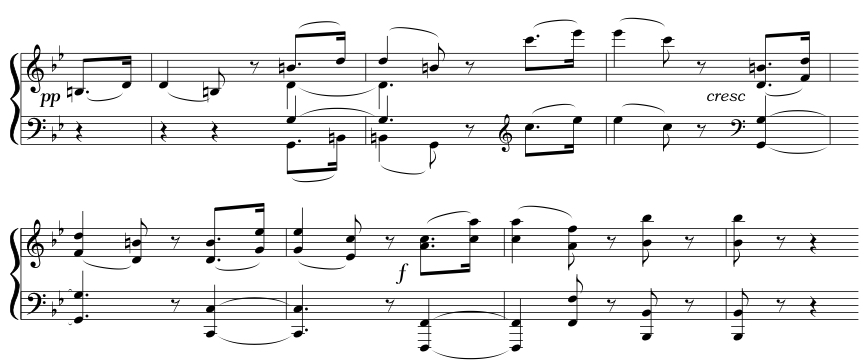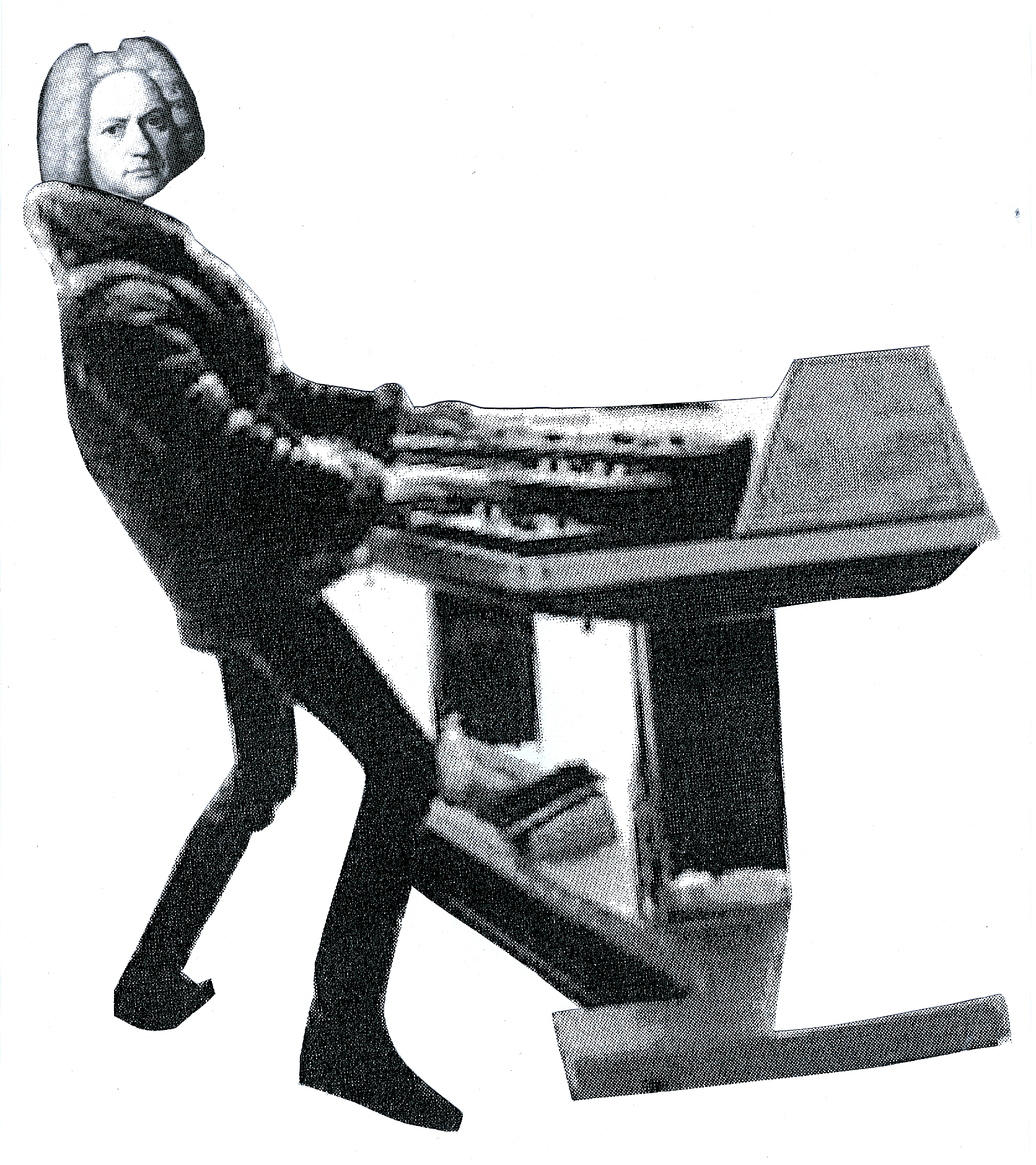|
In this Prelude Bach does something I'm unaware of him doing
anywhere else, ever: he throws the beat. The great
beat-thrower in classical music is of course Beethoven, followed
closely by Brahms, but here's Bach doing it 70 years earlier.
Here's Bach's notation of the opening four bars:

It's all hunky-dory in 6/8 time but that’s not what we hear. We
hear three measures of 3 (a 6/8 bar plus a 3/8) then one of four,
one of two, and back to 6/8, like this:

It wasn’t until the late nineteenth century that multiple
time-signatures like this were written out (the Promenade from
Mussorgsky's Pictures at an Exhibition, 1874, is an early
example) but composers were doing beat-shifting well before that –
they just barred it all in a single time. Here’s Beethoven doing
it in the second movement of the Hammerklavier Sonata:

You’ll notice that the method for throwing the beat is to
offset the harmony onto a weak beat of the bar. Beethoven puts a
strong change of harmony onto the weak third beat of a 3/4 bar and
we hear the pulse of the music move earlier. Conversely Bach, in
the third bar of his Prelude, puts the tonic harmony on the weak
second beat of the bar and we hear the pulse move later. Of course
if you bar the passage without changing the time signature (as
Bach and Beethoven do) you have in the end to ‘pay
back’ the beat to get back to the regular pulse, something
Stravinsky with his multiple time-signatures didn’t have to
bother with. Bach pays back immediately, Beethoven (for a joke)
delays the payback until we’ve ‘got used to’ the
new pulse and then wallops us with the real beat, making us jump.
(Bach’s beat-shift is much subtler that Beethoven’s,
but then Ludo was never averse to a bit of crudity. Quite
avant-garde really.)
Did Bach ever do this elsewhere? – did his contemporaries or
forebears? We can imagine him here taking pleasure in composing
something rather disreputable: we notice that he chooses to do it in
a freely-composed Prelude – not far removed from a Fantasia – not in
a strict form such as a fugue or even the conventional dances of a
suite. I’d be delighted to be alerted to other examples in his
oeuvre: not being an academic – and therefore disinclined to do the
necessary research – I must rely on others to set me right.
|



